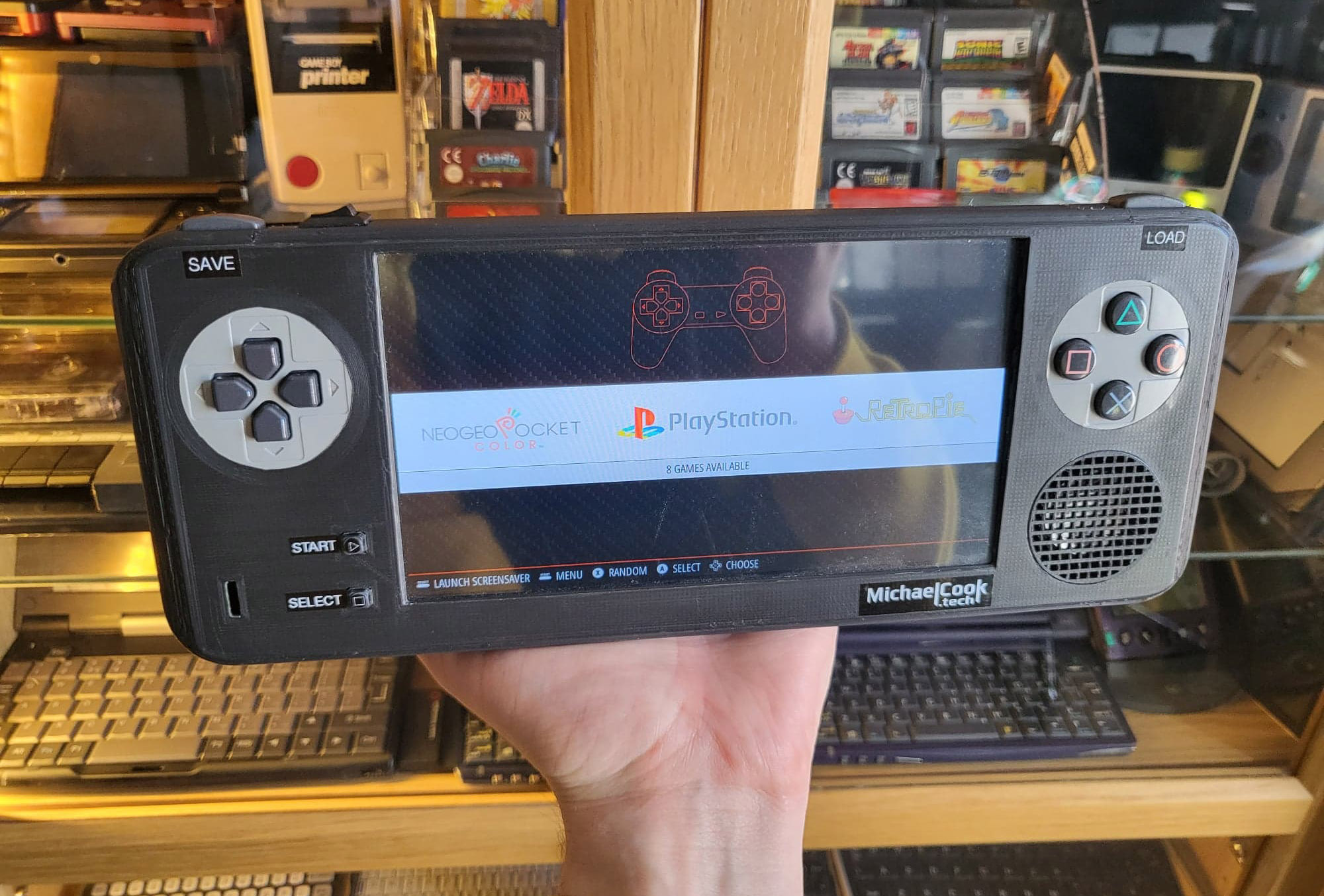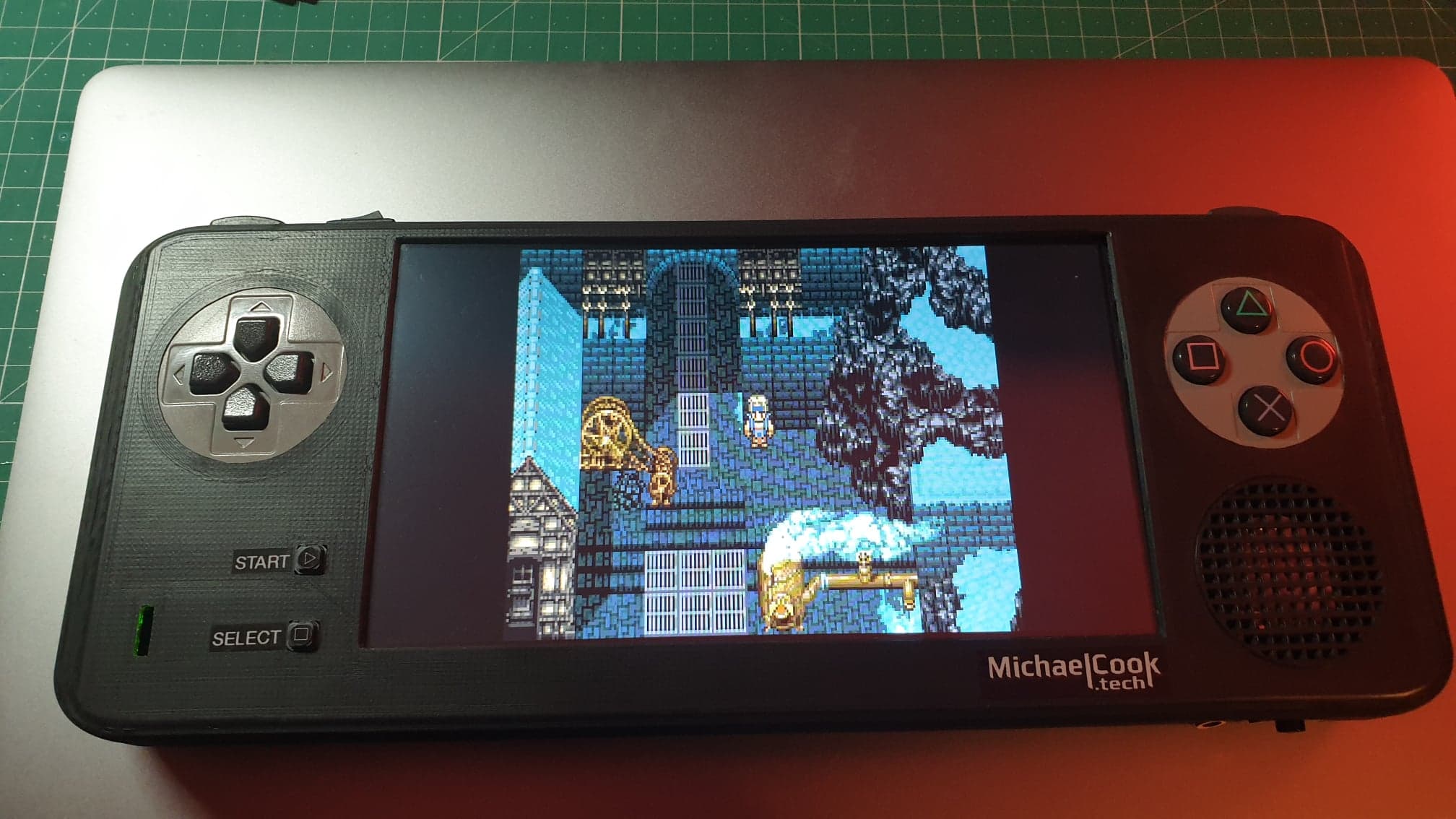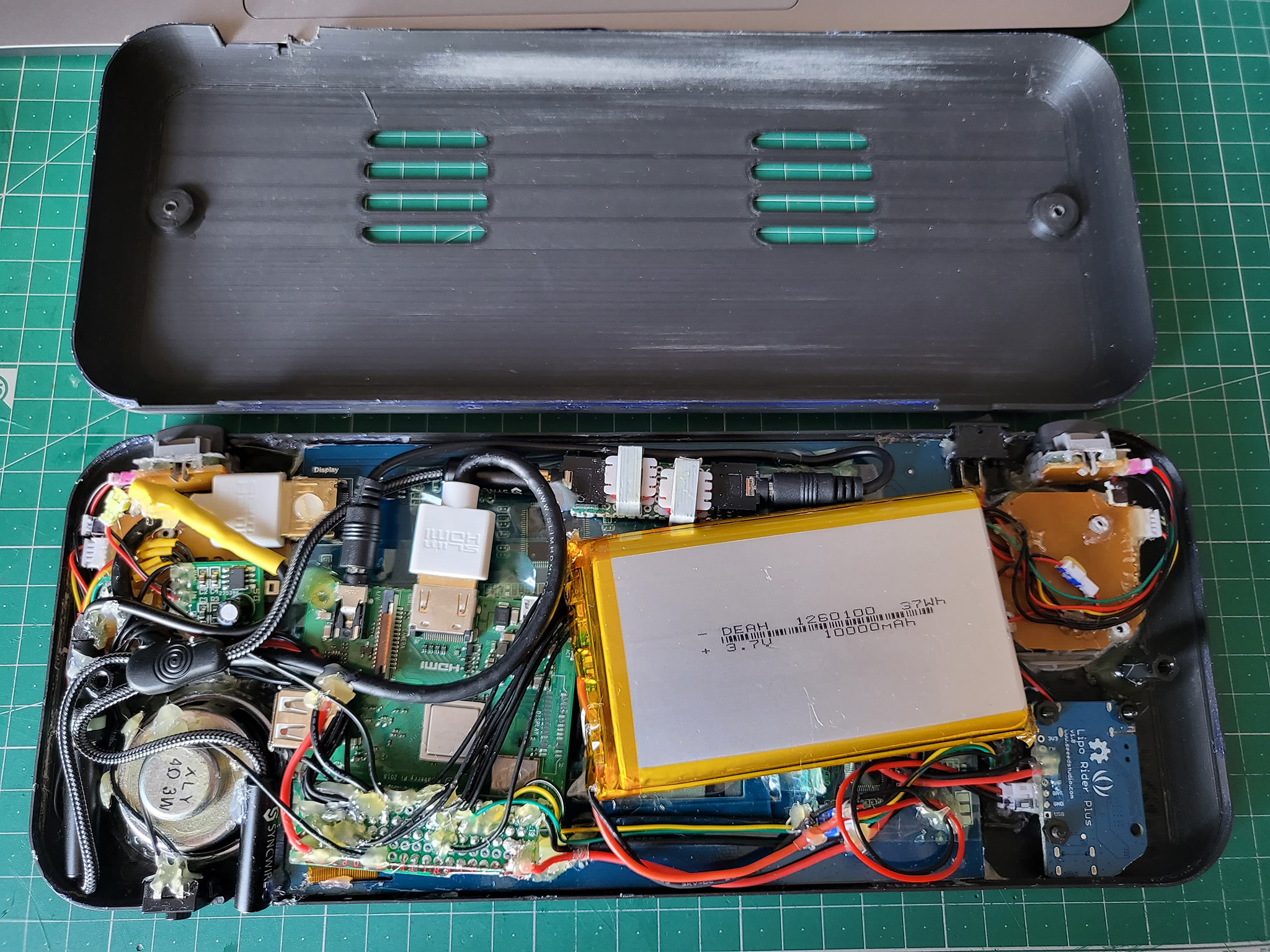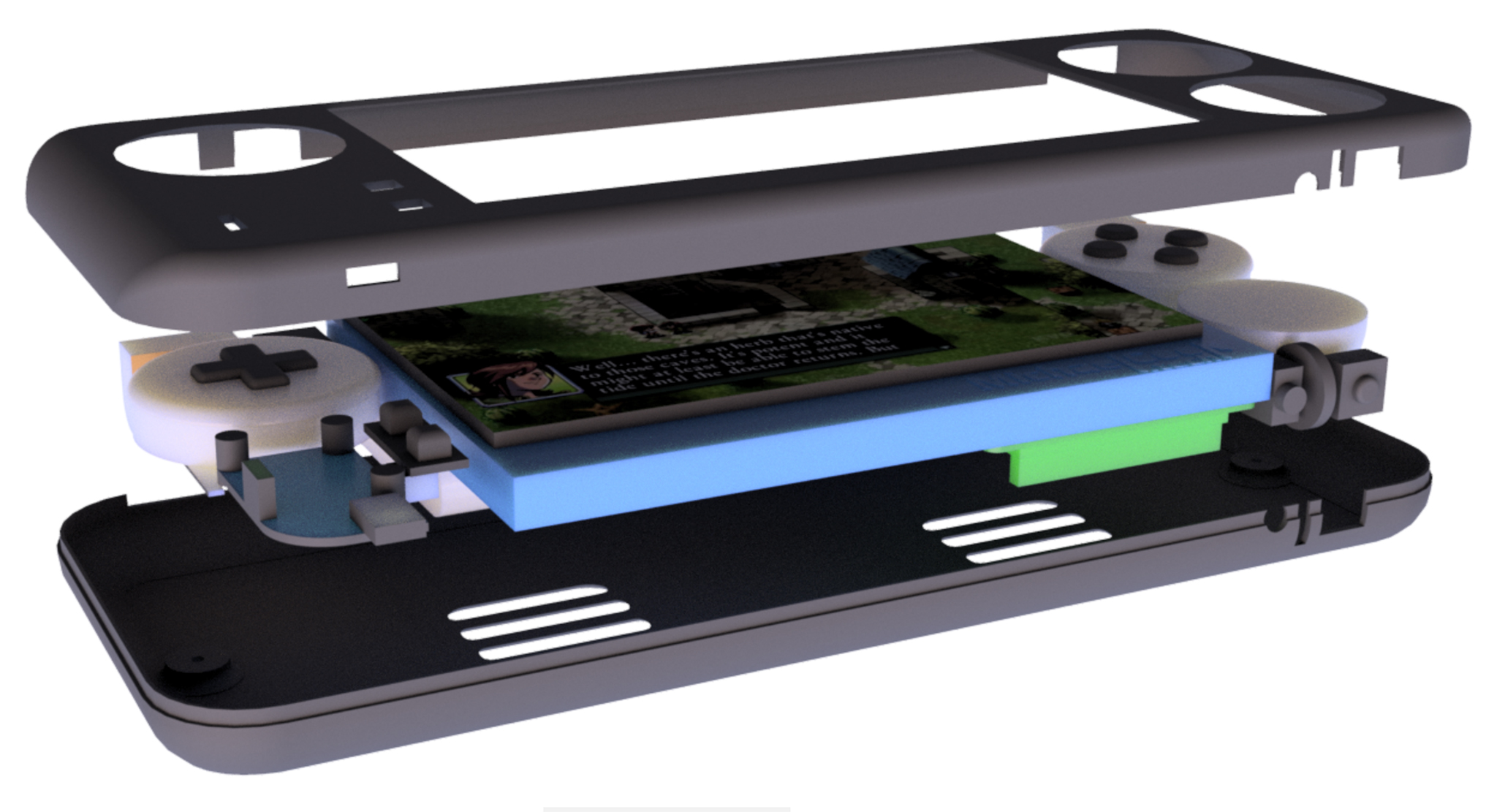MykeDrive
27 Aug 2021New console who dis?
This is a handheld console for up to fifth generation gaming. There are many like it, but this is mine!
Ingredients of note
- Raspberry Pi 3 Model A+
- Lipo Rider Plus 5V/2.4A boost (with battery level indicator)
- 7” Waveshare IPS LCD
- Audio splitter to headphones / speaker
- XH-M125 audio amplifier via stereo->mono circuit
- Ground loop isolator circuit
- 10,000mAh lipo
- (RetroPi OS)
Tips
- Ground loop isolator was a genius addition (if I do say so myself!) to stop audio buzzing - they’re easy to build with a couple 600ohm audio transformers and much smaller than commercial modules
- Don’t bother with a physical volume control, you can do that in RetroPi with button shortcuts
- A button HAT or USB interface is unnecessary as you can have 12 inputs going straight into GPIOs (possibly more)
Conclusions
I’ve built sooo many versions of this, I can’t even begin. For nearly ten years I reckon, including basically every version of Pi and Pi Zero they’ve released. Not to mention different screen sizes and controls (including a SNES controller version, and JoyCons but it was too jittery).
I’m super proud of this device; ergonomically it feels great with its curved edges. There are some disappointments, e.g. it’s massive and super messy internally - but with a 7” screen, huge battery, speaker etc you don’t have much choice and the ventilation is handy.
My future plans are to strip out the squidgy Playstation D-Pad and replace it with a Genesis one, plus prefabbing a proper motherboard PCB but to be honest I might just give it a rest for a couple of years until a new low-power SoC comes out that can handle PS2 and stuff.
2022 UPDATE: Technical Improvements
The power circuitry was an issue, as Pis and these commercial LCDs are nowhere near as efficient as you’d like and spikes can cause power cycles but after chatting with cheetahrunout (who built something similar there are significant improvements that can be made:
- Li-ions (e.g. 18650) instead of LiPos are heavier but have some benefits, such as the safety of their metal shell
- They can be charged and used in parallel if they have the same ratings and in fact, they naturally balance each other out (unless one cell dies)
- 3A charging circuitry/step-ups BMS modules are now more readily available
- A 6.3v 3300uf capacitor can be placed across the power connections to the device to smooth out any spikes



